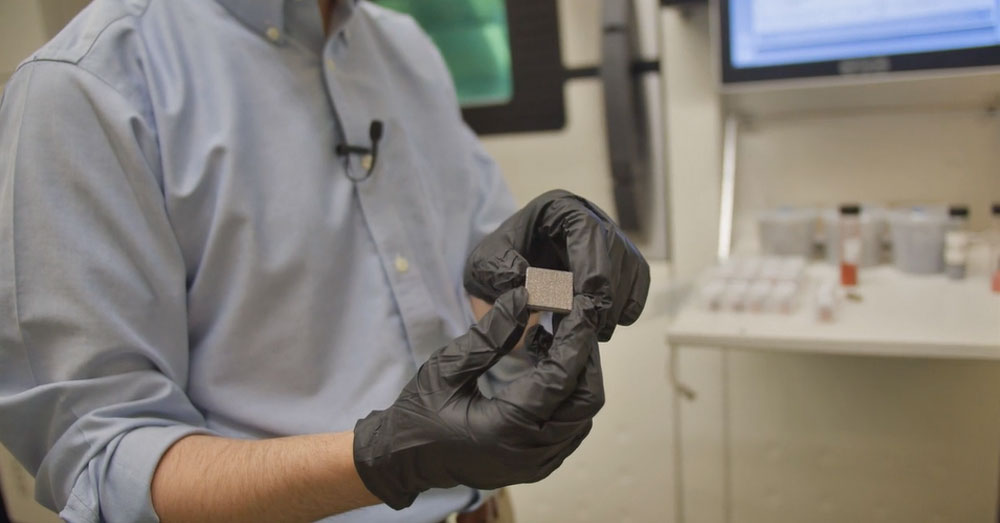Still in its infancy, metal 3D printing is part 21st century, part Dark Ages. It can produce a biomedical implant so porous that it integrates into a patient’s bones, yet the metal in the implant is appraised with a sand clock, a device invented in the 8th century to measure time.
Binghamton University researcher Scott Schiffres focuses on laser powder bed fusion, in which a thin layer of metal powder is deposited, and a high-powered laser melts the powder where the part will be. The process is repeated layer by layer. When the part is complete, it’s encased in unmelted metal powder, like a plastic bucket buried beneath a sand castle.
That unmelted powder is very, very expensive, but it can be reused. The question, according to Schiffres, is how many times can you reuse the powder before it’s no longer going to give you a high-quality part? The standards are well known for conventional manufacturing, but not for metal 3D printing.
Should NASA require only new powder to be used every time, or can they allow the powder to be used up to three times? Ten times? Schiffres invented a technology that harnesses the laser on a metal 3D printer to accurately assess the age, quality, and extent of oxidation of the metal powder. His innovation received an investment from the SUNY Technology Accelerator Fund in 2022.
Working on the TAF application helped him further refine the idea. “The TAF folks pushed us to identify the minimum viable product we could actually make and implement,” says Schiffres. When commercialized, the testing technology can save hundreds of millions of dollars, reduce materials waste, lower energy use, and help set desperately needed standards for the industry.
Professor Schiffres explains his work and the future of 3D printing in the video below:



